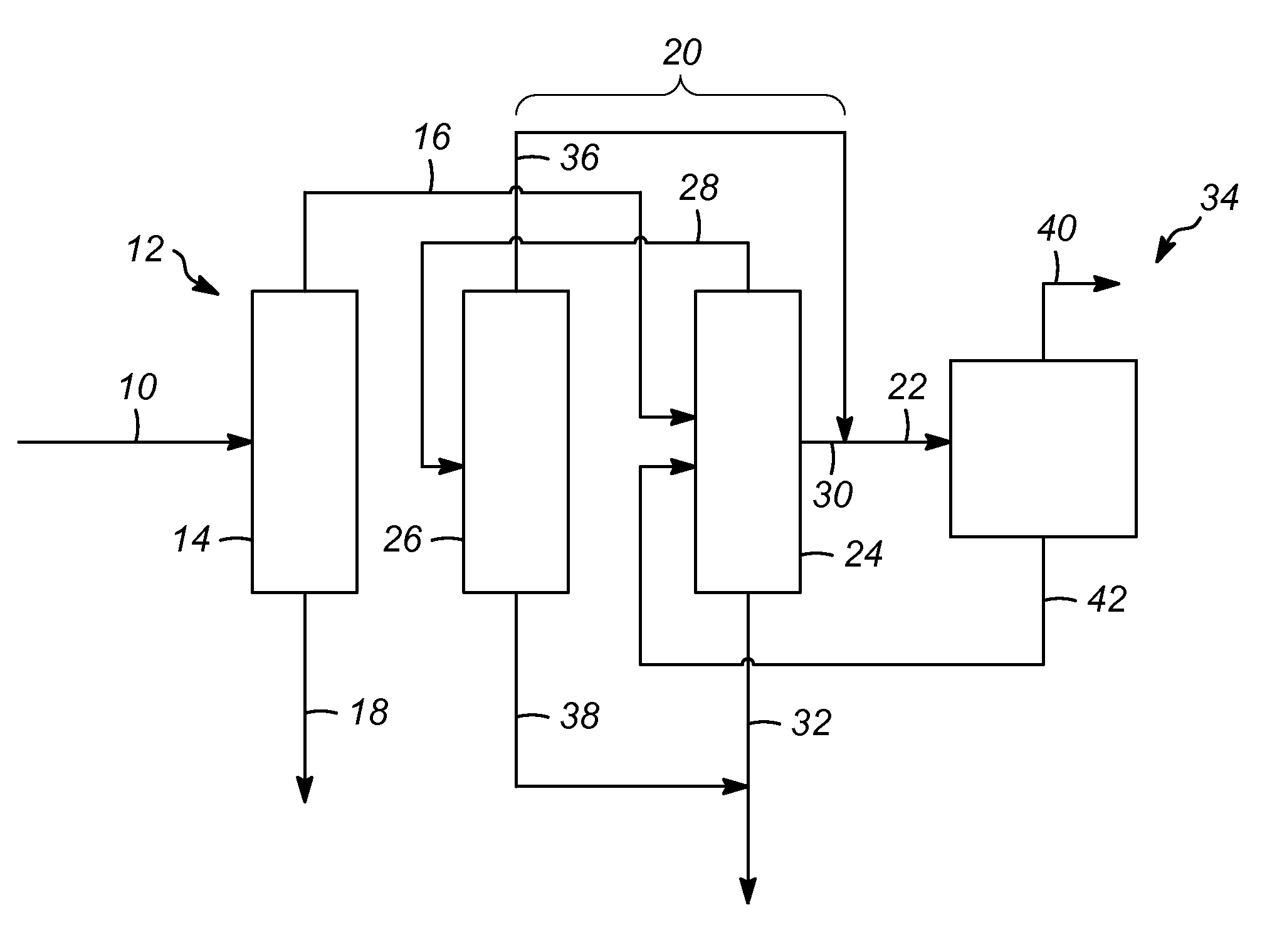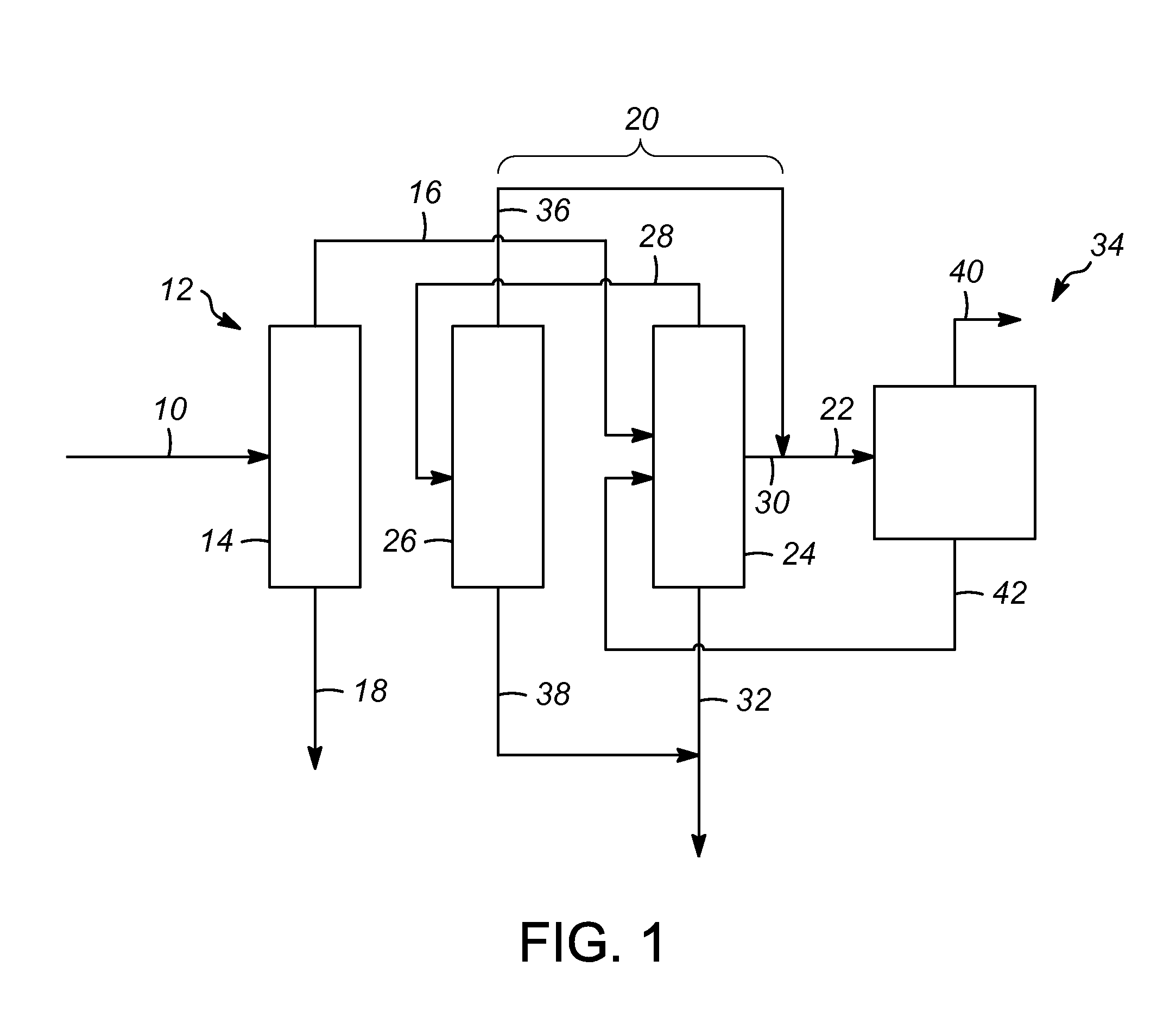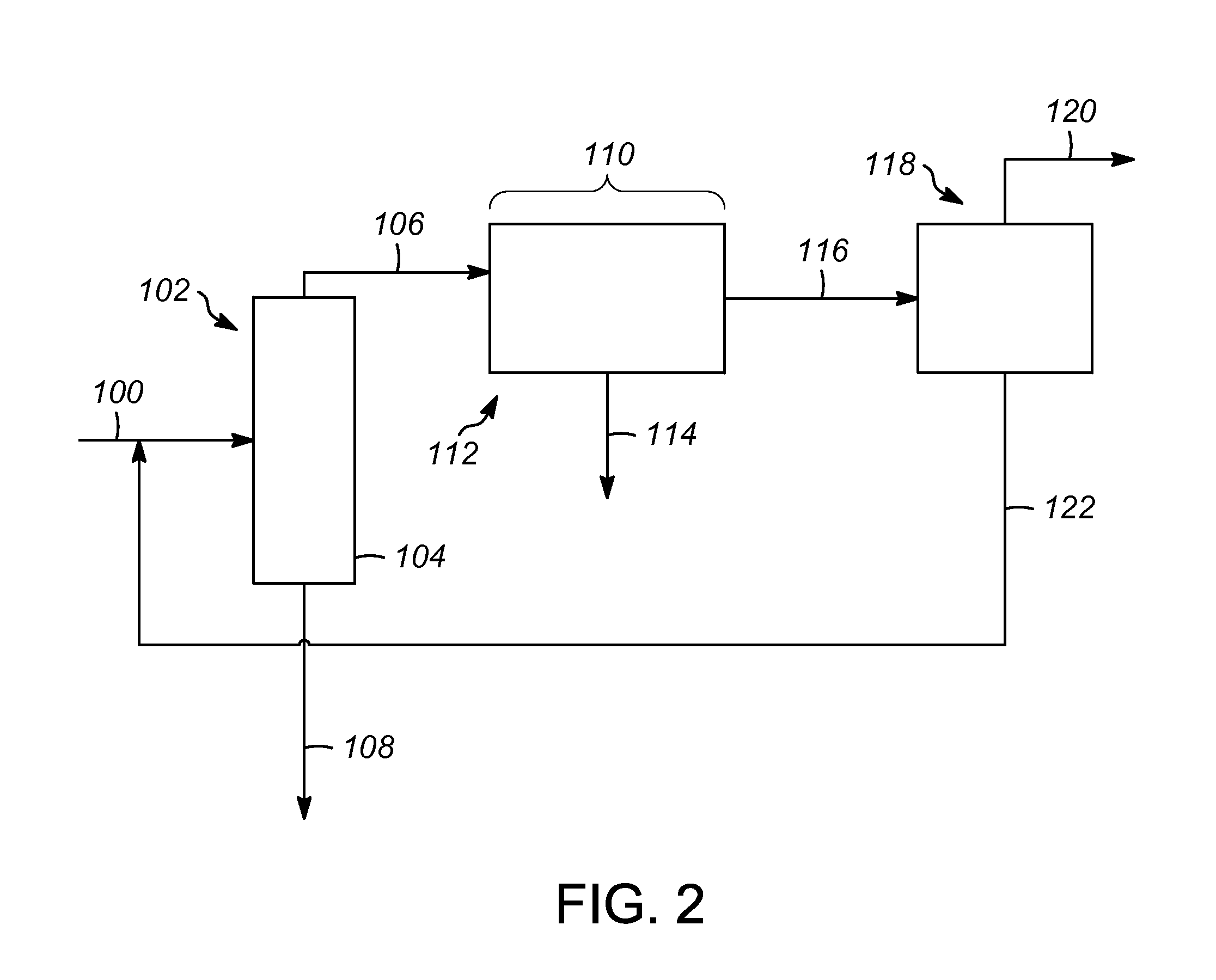Process for increasing the yield of an isomerization zone fractionation
a technology of isomerization zone and fractionation, which is applied in the direction of hydrocarbon preparation catalysts, hydrocarbon by saturated bond conversion, organic chemistry, etc., can solve the problems of large fractionation columns, large recycle streams, and large utility costs, and achieve the effect of increasing the conversion rate of iso-paraffins in the isomerization zon
- Summary
- Abstract
- Description
- Claims
- Application Information
AI Technical Summary
Benefits of technology
Problems solved by technology
Method used
Image
Examples
first embodiment
[0030]the present invention is shown in FIG. 1, in which a feed stream 10 is passed into a first separation zone 12. The feed stream 10 is preferably hydrotreated naphtha comprising C5+ hydrocarbons (meaning hydrocarbons having five or more carbon atoms).
[0031]The first separation zone 12 may include a separator column 14, such as a fractionation column. As will be appreciated, the depiction of column 14 is simplified as all the auxiliary operational components, such as controls, trays, condenser and reboiler, may be of conventional design. The feed stream 10, or multiple feed streams, can be fed into the column 14 at different locations if appropriate. The column 14 will typically contain conventional vapor-liquid contacting equipment such as trays or packing. The type of tray and design details such as tray type, tray spacing and layout may vary within the column 14.
[0032]The column 14 will separate the feed stream 10 into an overhead stream 16 and a bottoms stream 18. The overhea...
third embodiment
[0070]In a third embodiment according to the present invention as shown in FIG. 3, a feed stream 200 is passed into a first separation zone 202. The feed stream 200 is preferably hydrotreated naphtha comprising C5+ hydrocarbons.
[0071]The first separation zone 202 may also include a separator column 204, such as a fractionation column. This column 204 will separate the feed stream 200 into an overhead stream 206, an intermediate stream 208, and a bottom stream 210. The overhead stream 206 may comprise C5 hydrocarbons and iC6 hydrocarbons. The intermediate stream 208 may comprise n-hexane and C6 cyclic hydrocarbons. The bottoms stream 210 may comprise C7+ hydrocarbons. The bottoms stream 210 may be passed to various other zones, such as, for example: to saturation and then to a steam cracker; to a reformer and then to an aromatic complex; to saturation, then to a ring operating reactor, and then to a steam cracker; or a combination of the foregoing. The further processing of bottoms s...
PUM
| Property | Measurement | Unit |
|---|---|---|
| boiling point | aaaaa | aaaaa |
| operating pressures | aaaaa | aaaaa |
| operating pressures | aaaaa | aaaaa |
Abstract
Description
Claims
Application Information
 Login to View More
Login to View More - R&D
- Intellectual Property
- Life Sciences
- Materials
- Tech Scout
- Unparalleled Data Quality
- Higher Quality Content
- 60% Fewer Hallucinations
Browse by: Latest US Patents, China's latest patents, Technical Efficacy Thesaurus, Application Domain, Technology Topic, Popular Technical Reports.
© 2025 PatSnap. All rights reserved.Legal|Privacy policy|Modern Slavery Act Transparency Statement|Sitemap|About US| Contact US: help@patsnap.com



